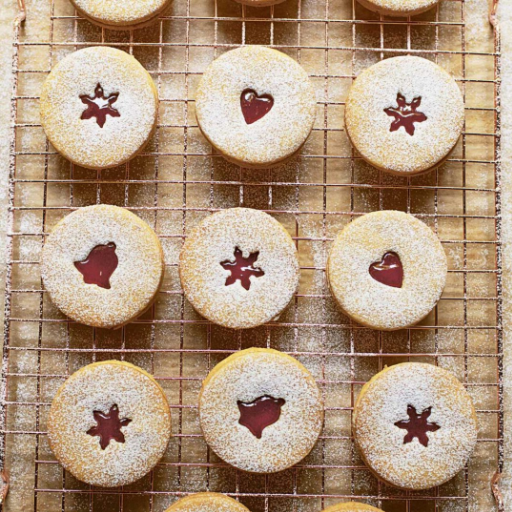At this technological revolution level stands the gummy industry. Advances...
Read MoreDelicious Biscuits Made with Oil for Every Occasion


Something is comforting about that faint scent of fresh biscuits drifting through the kitchen. Traditional biscuits have butter or shortening, which is one of many reasons they sometimes have a bad rap for being difficult to make. But what if there were a side-step-and-equal-quality option? Biscuits made with oil constitute a lighter, no-fuss alternative for crisp, golden-brown biscuits that will not compromise flavor and texture. This article provides a fail-safe recipe that is easy to follow and a must-know for anyone wanting an easy solution to making biscuits from scratch. You will get tips and tricks, more so, the secret of how to turn into yum biscuits some simple staples from the pantry, whether you are good at baking or a novice.
Understanding Oil Biscuits

What Are Oil Biscuits?
Oil biscuits fall into the category of quick breads made with the addition of oil, contrary to the traditional method, where butter or shortening is generally used for biscuit recipes. Therefore, this interchange allows the preparation to be even simpler and, very often, less expensive, because oil is usually present in all pantries. The oil, being the fat, ensures that the resulting biscuit is tender while presenting a slightly crisp crust. Biscuits cut with cold butter mill away into distinct layers, but these oil biscuits keep it simple; they are great for beginners and the master of short on time.
The most drastic characteristics of oil biscuits are their instant and versatility. They can be effortlessly flavored with herbs, cheeses, or spices, thus acting as a base for savory or sweet concoctions. Furthermore, since they don’t need cold substances, oil biscuits will easily withstand a warm climate without the necessary pastry tools. This in no way diminishes their worth, since the best oil biscuits can rival the best traditional ones while presenting a tender crumb that blends with almost anything topping or filling.
On the convenience side, oil biscuits clean up faster. The butter does not have to be cut into the flour, nor does the sticking flour-from-cold-fat dough have to be cleaned off the countertop or pastry cloth. As this second half-style recipe takes only five ingredients- farine, baking powder, salt, oil, and milk or water- those few and far between biscuits are for those who just want to grab fresh biscuits without the entire long list of complicated steps or specialty ingredients. Ideal served alongside soups or topped with gravy or jam, oil biscuits, and a speedy finish appeal to all.
Benefits of Using Oil in Biscuit Recipes
Oil can benefit bakers in several ways, particularly if modern bakers look for ease without compromising on taste or texture. First, it is much easier to add oil to biscuit dough rather than solid fats, as oils form a more even coating, thus producing a more uniform crumb texture. This ease of mixing also cuts down preparation time, making these oil-based recipes a good option for those on tight schedules.
Secondly, oil tenderizes the biscuits. Butter, when manipulated too much, can cause a dense lump of biscuit, while oil keeps them light and flaky. In addition, oil-based dough is forgiving of temperature changes, so there is less worry about keeping the fats chilled or reaching perfect consistencies during preparation—all the usual problems of standard butter or lard-and-flour recipes.
Health-conscious bakers will surely be glad to know the flexibility oils provide in choosing even healthier fat options, such as olive or avocado oil, which feature the much-desired unsaturated fats. Thus, this versatility enables one to adjust recipes according to specific dietary considerations without compromising the satisfactory qualities of the biscuits.
Lastly, oil resists committing to water, which is what butter is so good at doing. It thus gives baked goods a much greater shelf life, so biscuits stay moist and fresh for longer. These pragmatic and gourmand perks have clinched oil’s position among the popular choices in biscuit recipe formulation nowadays, as it blends convenience and quality for both occasional and avid bakers.
Comparing Oil Biscuits to Traditional Recipes
There are several significant differences between oil-based biscuits and the traditional butter-based ones, ranging from texture and flavor to baking convenience. Oil biscuits usually have a more tender, lighter crumb because, unlike solid fats that must be worked into the flour, oil remains liquid and can coat flour particles evenly. On the other hand, these oil-based formulations would yield a more consistent and desirable texture in applications where softness and moisture retention are the uppermost considerations.
Traditional butter biscuits are adored for their considerably rich flavor and flakiness that comes from layers of solid butter throughout the dough; however, this kind is quite tricky to achieve and typically requires precision, chilling of ingredients to prevent the butter from melting too fast during preparation, and other time-consuming steps.
Oil-based biscuits can better serve some dietary needs. When plant-based oils are used, they can be made dairy-free or vegan. Some recipes also call for oils with healthier fat profiles, such as olive oil, which could be considered lighter than the saturated fat in butter.
According to several insights from the baking industry, baking with oil may perhaps be easier and simpler with a shorter preparation time. This is because, unlike butter, oil requires no extra step of creaming or cutting into the flour. Besides, biscuits made with oil tend to have better shelf life: they stay moist and fresh for longer without the water content in butter.
Choosing between oil and traditional butter in biscuit recipes depends on texture, flavor, convenience, and dietary preferences. Both methods possess unique qualities, thus giving bakers room for flexibility and creativity based on their requirements.
Ingredients for Perfect Biscuits
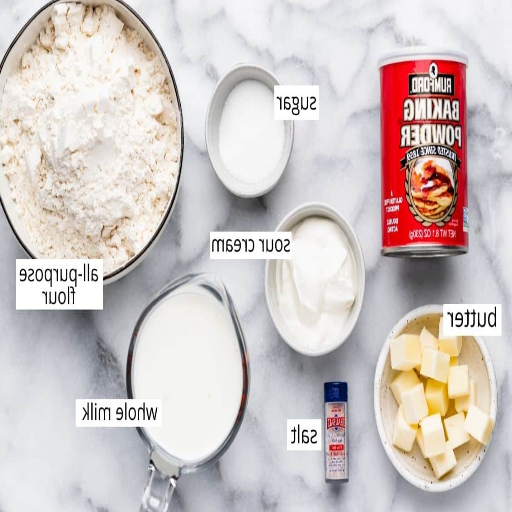
Essential Ingredients: Flour and Baking Powder
Flour and baking powder make the keys and the backbone of any great biscuit recipe that needs structure and lift to deliver a light and fluffy texture. All-purpose flour, which is softer and has less gluten formation, is welcomed because it yields tender crumbiness without any harshness in texture. Cake flour with a lower protein content can be favorable for an even more fragile texture.
Baking powder acts as the leavening agent, emitting carbon dioxide as it is heated to allow the dough to rise optimally. Generally, a double-acting baking powder is preferred since it reacts first to liquids and then to heat, so you get an assured lift. When working with these ingredients, precision must be observed; overflouring may result in dense biscuits, whereas not enough baking powder would impede their rising. Getting this balance between these key elements right will allow for making airy and delicious biscuits each time.
The Role of Buttermilk in Biscuit Making
Buttermilk is the wet ingredient par excellence for traditional biscuit recipes because it upholds flavors and textures. A faint tang afforded by the buttermilk hits the dough, setting it off from the butteriness of the cooked biscuits. While tasty, a vital chemical function of the buttermilk lies in its acidity. This acid reacts with baking powder or soda, which are employed in almost all recipe variants, to produce carbon dioxide. This gas escapes during mixing and baking, resulting in the fluffy, tender crumb characteristic of good biscuits.
Another benefit of baking comes from buttermilk, which makes the dough consistent. The slight thickness of buttermilk compared to plain milk helps maintain moisture in the dough without undue stickiness or difficulty handling. Then, its proteins and fats aid the biscuit structure so they do not dry too much, finishing with softness and a flaky interior. In the view of health-conscious bakers, there is also low-fat buttermilk, which may be used without a backup to achieve desired results, thus covering a wide array of dietary needs.
Gentle mixing is advised when adding this ingredient to biscuit recipes, allowing gas pockets to form during incorporation. Overmixing stiffens the dough, which means denser biscuits. Always ensure that buttermilk is chilled correctly before use, as cold temperature helps keep the dough cool, a very important factor in creating good layers and flakiness. Undoubtedly, buttermilk is the key ingredient that breathes life into homemade biscuits, making them light, airy, and delicious, thanks to its distinctive properties and flavor grounding.
Choosing the Right Oil for Your Biscuits
Selecting the right oil is critical in perfecting your home-baked biscuits in terms of texture, flavor, and moisture. Oils add richness and tenderness to a recipe that includes equally essential ingredients such as buttermilk. The general rule for plain biscuits is to rely on more or less neutral-flavored oils such as vegetable or canola oils that offer the faintest taste, allowing other flavors to come through. However, for a more pronounced, buttery flavor, the use of coconut oil or olive oil might be considered.
Each type of oil aids in creating different textures; for example, coconut oil in its solid state will mimic flakiness much like butter, whereas olive oil gives a soft richness on the palate and is nice in savory biscuit variants. Choosing premium-quality cold-pressed oils will improve your biscuits’ nutritional value and taste.
Oil substitution for another fat can be tricky: consider the different proportions required and the texture you’re aiming for in your dough. For the most part, oil will make a firmer dough than butter, but it certainly allows for a quicker and easier biscuit-wheat-as-you-go preparation, eliminating any chilling time for cutting in the fats. Of course, the possibilities for fantastic biscuits are endless with the right oil, measured correctly, and chosen with care.
Old-Fashioned Biscuit Techniques
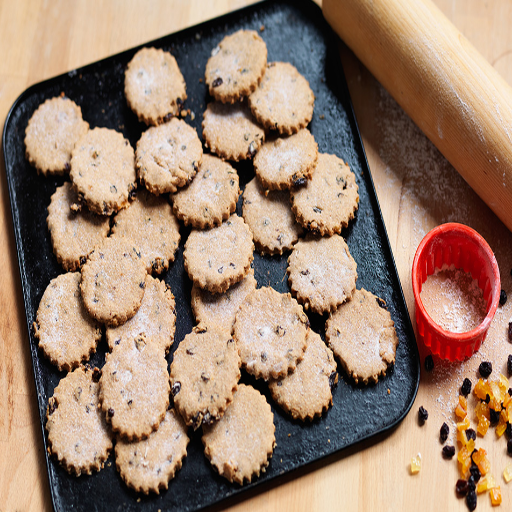
Classic Methods for Making Biscuits
Traditional biscuit-making included some time-proven techniques for fluffy, tender results. The dry ingredients, such as flour, baking powder, and salt, must be adequately sifted for even mixing and aeration. Proper sifting results in light and evenly baked biscuits. Gentle mixing is also important. Overworking leads to tough and dense biscuits. The fat, usually butter or shortening, should be cut into the flour till coarse crumbs are formed; these crumbs create pockets that expand during baking to make the biscuits flaky.
Temperature changes are highly influential in biscuit making. Cold ingredients, especially butter or fat, give the desired rise and layers. Many bakers chill their dough before cutting to ensure the dough stays firm. Good shaping matters too: stamps should be sharp, and sideways twisting while cutting should be avoided to get biscuits with clean edges that rise evenly during baking.
According to modern baking lore, using alternatives such as buttermilk or yogurt adds moisture and tang, which uplifts the taste. Precision matters, so any true baker would consider investing in a good kitchen scale. Hence, blending traditional methods with a few modern nuances goes the extra mile toward baking traditional biscuits with a zing of modernity.
Incorporating Olive Oil for Flavor
Using olive oil in baking is an excellent way to add flavor complexity with an elegant touch of Mediterranean flair. It is a healthy alternative that adds richness to baked goods with a faint fruity or peppery undertone, depending on the oil. Using olive oil instead of usual fats like butter or margarine makes light and moist biscuits that go with sweet and savory treats. Extra virgin olive oil is the best for flavor and nutrients, while light olive oil is fine if something more neutral is needed.
While preparing recipes with olive oil, you must never forget that it is a liquid, whereas butter is a solid fat. Usually, you would use about 25% less olive oil than butter, as olive oil mixes more easily into dough. Besides, olive oil pairs nicely with a few savory accompaniments such as rosemary, garlic, or grated cheese. Any sweet biscuit can be nice with citrus or almond extracts, whereas the matching nature of olive oil lets your mind wander. To give a healthier twist to your baking recipes, olive oil offers antioxidants and monounsaturated fat, ensuring that it doesn’t interfere with the recipe’s texture or flavor. Varying the olive oils can lead to an infinite array of combinations, lifting the humble biscuit to haute cuisine.
Tips for Achieving the Perfect Texture
Consistency of texture depends on ingredients, method, and, most importantly, timing. Always use cold fats, such as chilled butter or olive oil, to yield the most tender and flaky results. Cold fat sets up, or rather, cold bits of fat, via melting and releasing steam in the oven, will help create layers and raise biscuits. Ensure the butter is frozen and grated into the flour for the best distribution and thus more flakiness.
Do not mix the dough too much, for it will allow gluten in the flour to develop, leading to denser and chewier biscuits than soft and light ones. Mix until just combined, and it is fine to see some streaks of flour. It is essential to remember that the ratio of liquids to flour, all too often, too much yields sticky dough, while too little will make the biscuits crumbly, and maybe they will even dry out when baked.
The biscuits should be cut with a sharp edge for a bigger rise. They should then be placed closely together on the baking sheet to encourage vertical rising. Also, never fail to preheat the oven; baking at a proper temperature lets the biscuit dry a little around the edges, giving it all its beautiful golden brown color without going half-baked straight from the oven.
With a little adjustment of the above steps, a biscuit runner can transform a boring batch into a worthwhile treat, combining softness, flakiness, and structure.
Foolproof Biscuit Recipes
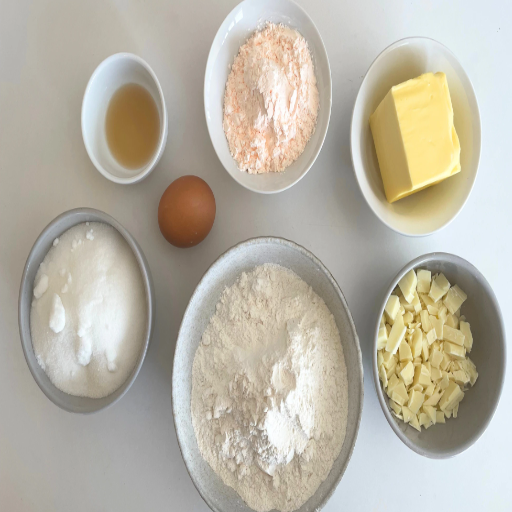
Easy Drop Biscuit Recipe
If you want to serve a fast and tasty biscuit with homemade decadence, this easy drop biscuit recipe is right for both novices and seasoned bakers. With hardly any ingredients and no dough rolling or cutting involved, you can have golden and fluffy biscuits on the table within minutes!
Ingredients:
- 2 cups all-purpose flour
- 1 tablespoon baking powder
- 1/2 teaspoon baking soda
- 1/2 teaspoon salt
- 1/4 cup cold unsalted butter (cut up in small chunks)
- 3/4 cup cold buttermilk
- 2 to 3 tablespoons milk (for brushing, optional)
Instructions:
- Prepare Dry Ingredients: Preheat the oven to 425°F (220°C). Line a baking sheet with parchment paper. Combine the flour, baking powder, baking soda, and salt in a large bowl. Stir very well so the ingredients are evenly distributed.
- Cut in Butter: Add the cold butter into the dry mixture. Rub the butter into the flour using a pastry cutter or your fingers until the mixture is in pea-sized crumbs. The colder the butter, the better it will tenderize and hold crisp layers in the final dough.
- Combine with Buttermilk: Pour the cold buttermilk over the mixture and stir gently so the flour and liquid bind into a sticky dough. Do not overwork, or you will have dense biscuits.
- Drop the Dough: Use a large spoon or ice cream scoop to drop dollops of biscuit dough onto the baking sheet, spacing about 2 inches apart.
- Bake Until Golden Brown: Brush the tops with milk to give them a golden finish (optional). Let the biscuits bake for about 12-15 minutes until brown and cooked.
- Serve and Enjoy: Let the biscuits cool slightly before serving. They taste delightful with butter, jam, or savory gravies.
Notes on Variation:
- For a cheesy kick, fold in 1/2 cup shredded cheddar before stirring in the buttermilk.
- Add a teaspoon of garlic powder for extra savory flavor.
- Substitute buttermilk with equal parts milk and lemon juice as a good, quick alternative.
These easy drop biscuits go well with any meal or make for a quick snack—they were all created with simplicity and versatility in mind!
Baking with Self-Rising Flour
Essentially, self-rising flour is a helpful ingredient that eases the baking process by combining ordinary all-purpose flour with baking powder and salt. It is used for fast breads such as biscuits, pancakes, or muffins that save time yet give excellent results. Their leavening power is necessary for rise; this flour is excluded from those recipes that use yeast or demand more time for rising.
When using self-rising flour, you must adjust the other ingredients slightly if you don’t want the recipe to become too salty or too leavened. For example, if the recipe prescribes all-purpose flour and baking powder, using self-rising flour as a substitute will usually preclude the use of any further leavening agents. Keep the flour potent by storing it in an airtight container in a cool, dry place.
Home bakers today are trending toward experimenting with self-rising flour in both classic and modern recipes. This method guarantees homemade breadsticks and quick desserts like cobbler and shortcake: the easier, the better!
Using Greek Yogurt for Fluffiness
Greek yogurt is an ingredient that is gaining in popularity in baking because it promotes the formation of soft, fluffy textures in many types of recipes. Loaded with protein, Greek yogurt has a naturally creamy texture that moistens baked goods and imparts that distinct tartness, which pairs well with sweet and savory offerings. Using this in your muffin, pancake, or cake recipes greatly enhances the structure and softness. Greek yogurt is a healthier substitute for butter or oil, reducing the fat level without affecting the end product. Furthermore, because of its acidic nature, yogurt combined with baking soda helps in leavening, ultimately contributing to the light and airy textures that accentuate your baking efforts.
Occasions for Enjoying Biscuits

Breakfast Ideas with Oil Biscuits
When it comes to a sturdy and appetizing breakfast, I find oil biscuits endlessly versatile, so I make them almost every time. Most of the time, I prefer to have them served warm with melting butter and a drizzle of honey or jam. That flaky biscuit texture meets those sweet toppings to make an amazingly comforting food, indulgent but wholesome at the same time. All you need is a cup of coffee or tea, a leisurely breakfast that never disappoints.
Another variation I opt for is oil biscuit breakfast sandwiches. Often, I’ll open them and pack on scrambled eggs, crisp bacon or sausage, and a slice of cheese for a satisfying fast breakfast. Sometimes, I’ll top it off with two slices or so of avocado or perhaps a light drizzle of hot sauce to enhance the flavor. It’s a great way to give the oil biscuits a makeover and usher them into the aisle of punchy protein breakfasts.
I like to turn oil biscuits into savory biscuit bowls for something more exciting. After carving out a bit of dough from the middle, they get filled with anything from sausage gravy to creamy scrambled eggs or a veggie medley, immediately upping the visual appeal and throwing some exciting twists into a classic breakfast favorite. Whatever mood I’m in, sweet or savory, oil biscuits always promise a yummy and trustworthy dish that fills colors in my morning track.
Serving Biscuits at Family Gatherings
When biscuits are served at family gatherings, I give an assortment of biscuits to suit all tastes while keeping it simple and inviting. I prefer to make a few sweet and savory kinds; that way, the selection is quite varied. The lovely end of things affirms good territory for buttery biscuits accompanied by some whipped honey butter or homemade fruit preserves. On the other hand, the savory offering lets the hosts top theirs with good pimento cheese, smoked ham, or even herb-infused cream cheese if you’re feeling wild, so that guests may prepare every bite to their liking.
The biscuits, placed high center on the platter, are surrounded by little bowls of toppings, spreads, and fillings, making for an excellent presentation opportunity. This way, people can help themselves and have a little interactive experience by trying out some combos. When I expect a big crowd, I make the mini kind because they are bite-sized and leave lots of space for other samples.
Biscuits are versatile and timeless crowd-pleasers that bring a comforting, homey feel to any gathering. They can be made beforehand, and wonderful conversations and fond memories are made over warm, flaky biscuit chatter. I keep the biscuits coming in numerous varieties, all in the name of practicality, so you will know that they will always be served at any family get-together.
Creative Pairings for Your Biscuits
My approach to unique biscuit pairings tends to favor both classic and unconventional ones to encompass all tastes. The savory counterpart for me is rich sausage gravy, which goes along perfectly with the buttery, flaky layers of the biscuit. Moving along the slightly less heavy side, I’m all in for herbed cream cheese or smoked salmon with a little bit of dill to create an elegant yet comfort-food type of arrangement.
For the sweet ones, I enjoy my biscuits with fruit preserves, such as strawberry jam or orange marmalade, to juxtapose that bright, tangy flavor. A few splashes of freshly whipped cream and some honey would turn that into a delicious treat. If I feel more adventurous, I will do a spiced apple compote or a chocolate hazelnut spread to introduce richness and warmth, which gels well with the faint sweetness.
I always like to keep a bit of each around for parties so there’s something for everybody. Ultimately, their endless versatility makes biscuits the best canvas on which to paint experiences through a shared play on taste that leaves friends and family with whimsical memories to cherish.
Reference Sources
- Crisco® Oil Biscuits Recipe – Crisco Canada
- Old Fashioned Oil Biscuits (Foolproof) – The Semi-Sweet Sisters
- Old Fashioned Buttermilk Biscuits Recipe – Lana’s Cooking
- Butter vs. Oil in Cookies: Which One to Use for Baking? – The Cravory
- Use of Vegetable Oil in Bakery Products and Consumer Trends – BBM Magazine
Frequently Asked Questions (FAQs)
How are Biscuits made with oil?
Biscuits, made with oil, are a variant of a dessert or snack in which the cooking fat is oil, not a solid ingredient like butter or shortening. Sometimes, this can yield a softer crumb, and it can also be said to be the lesser of two evils. Different people prefer to use olive oil, especially the flavorful types.
How do I make biscuits with olive oil?
To make these, first, preheat your oven to the right temperature. Pour the self-rising flour and baking soda into a large mixing bowl and mix them. Mix until a dough has formed by adding the olive oil. Rest the dough for a few minutes, then come back to it in a while and roll it out on a floured surface around four to one. On the greased sheet, then cut it out and bake until golden. It was delicious!
Will wheat flour be acceptable for biscuit making with oil?
Wheat flour can be used in biscuit making when oil is also required. If one uses whole wheat flour, the biscuits will have a firmer crumb and richer flavor, but they will still yield a light and fluffy biscuit, provided the right amount of oil and the other ingredients are incorporated.
How long should the biscuits baked with oil be put in the oven?
Anyway, the baking time for these can typically be 10 to 15 minutes, and this will depend on the oven and the dimensions of the cut biscuits. They are better baked than not; you can remove them when their tops are golden and crispy.
Can I replace oil with butter in classical biscuit recipes?
Of course! It is possible to replace butter with oil in classical biscuit recipes. However, the biscuits will have a somewhat different texture, as oil is different from solid shortening or butter, and so the texture is likely to be a little better or lighter.
How can I make an oil-based biscuit that is light and not too cloying?
When making oil-based biscuits that are light and heavy and not glued to the roof of the mouth or your fingers, it is recommended that the dough not get overmixed after adding the wet ingredients. Combining the ingredients carefully without compressing, adding excess pressure, or decreasing the amount of air will leave the dough’s softness intact ahead of baking.
What are some different versions of recipes for oil biscuits?
To vary the regular recipe for oil biscuits, there are quite a few features to consider, such as the use of herbs, cheese, and any other items that enhance the flavor of the biscuits and spices. Also, exchanging oils like canola or coconut for olive oil will give the biscuits a new and interesting flavor and texture.
Sure, hate greasing up baking sheets for oil biscuits?
Though it does not have to be a strict rule to oil the baking sheet for the sake of the oil biscuits, it can really help prevent cracks and make extraction easier. Oiling the ungreased baking sheet lightly with cooking spray or oil can also do the trick.
Related Posts
- Easy Recipes for Perfect Buttermilk Drop Biscuits
- How to Make Flaky Buttermilk Biscuits: The Ultimate Biscuit Recipe
- The Ultimate Guide to the Best Gummy Candies: Fruity Flavors and Top Brands
- Discover the Secrets: What is Popping Boba Skin Made Of?
- Discover the Best Wholesale Gummy Candy: From Bulk Bags to 12 Flavor Assorted Gummies
- Lychee Popping Boba: The Ultimate Guide to Popping Pearls with Real Fruit Juice
- The Best Homemade Biscuits: Quick and Easy Buttermilk Biscuits Recipe for Fluffy Results
- Understanding the Biscuit Manufacturing Process: From Raw Material to Quality Biscuit Production
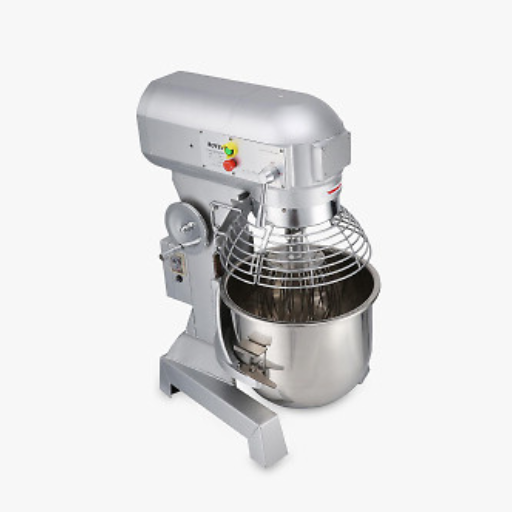
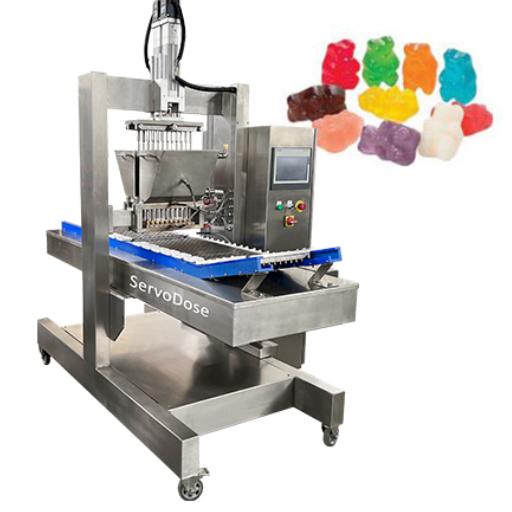

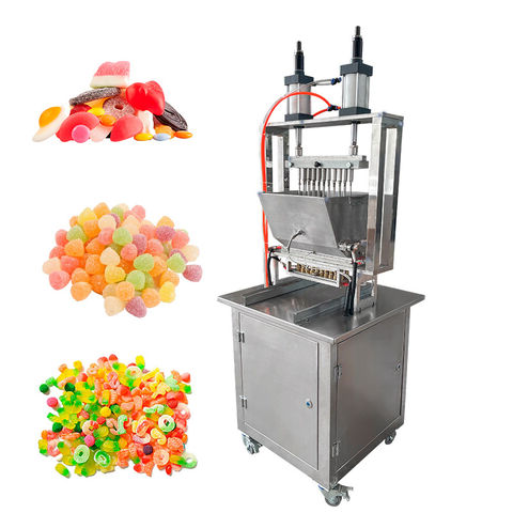

Blog Categories
Popular Blog Tags

Shanghai Fude Machinery Manufacturing Co., Ltd is a leading manufacturer of top-notch gummy and cookie making machines with more than 15 years’ experience in the industry. We provide creative equipment that ensures accuracy and speed while sharing intelligence with food producers. Shanghai Fude remains to be one of the most reliable companies for food machinery because of its dedication to perfection.




